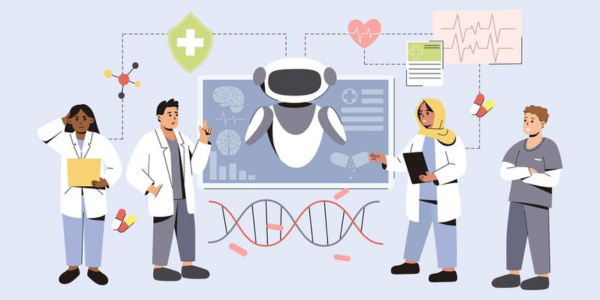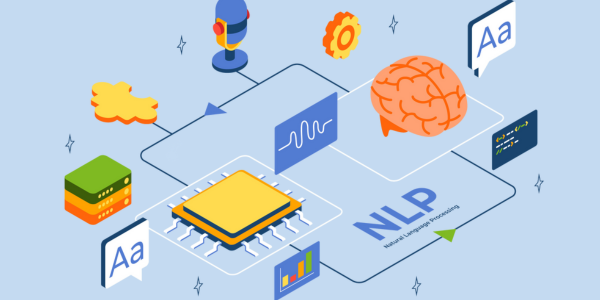27 Jul
In a society where access to healthcare is essential to our quality of life, it is imperative that funds designated for this purpose be used sensibly and openly. Healthcare fraud is a serious problem that can jeopardise patient care in addition to depleting financial resources. Thankfully, developments in artificial intelligence (AI) technology are offering useful remedies to stop healthcare fraud without resorting to arcane vocabulary or technical phrases.
The rising worry over healthcare fraud
Healthcare fraud is not a recent issue; in fact, it has long been a source of frustration for the sector. It includes a range of illegal actions, including falsifying claims, invoicing for treatments that were not rendered, and paying bribes to medical professionals. The consequences of healthcare fraud extend beyond financial loss; it can lead to suboptimal care and negative outcomes for patients.
AI’s Place in Preventing Healthcare Fraud
AI technology is drastically altering the field of preventing healthcare fraud. It offers a range of methods and instruments that are showing themselves to be useful in spotting and stopping fraudulent activity. Without delving too much into technical complexity, we shall examine here how AI is helping this vital cause.

Pattern Recognition and Data Analysis
Analysing data and identifying patterns is one of the main ways AI can assist in preventing healthcare fraud. Massive datasets from a variety of sources, including provider information, billing claims, and patient records, can be analysed by AI systems. They are able to identify odd trends that can point to possible fraud.
For instance, AI can identify instances where a patient received the same service multiple times within a short period, which could raise suspicion. It can also flag cases where billing codes don’t align with the services rendered. These anomalies may not be evident to a human investigator, but AI’s ability to process vast amounts of data quickly makes it an invaluable tool.

Real-time Monitoring
Another significant advantage of AI in healthcare fraud prevention is its ability to monitor activities in real-time. AI can be set up to track claims and transactions as they occur. When irregularities are detected, alerts can be generated, allowing for immediate investigation.
For example, if an AI system notices that a healthcare provider is billing for services while the patient is in another location, it can flag this as a potential issue. Such real-time monitoring can help prevent fraudulent activities from escalating and minimise the financial impact.

Behavioural Analysis
AI technology can also perform behavioural analysis to detect healthcare fraud. By assessing the behaviour of patients, providers, and payers over time, AI can establish a baseline of typical activity. Any deviations from this norm can be identified as potential red flags.
For instance, if a healthcare provider suddenly starts billing for services that are outside their usual scope, AI can detect this shift and raise a warning. Similarly, if a patient exhibits unusual patterns of seeking care from multiple providers simultaneously, AI can identify this as a potential issue.

Predictive Modelling
AI’s predictive modelling capabilities are yet another valuable tool in the fight against healthcare fraud. By analysing historical data, AI can forecast potential fraudulent behaviour. This allows organisations to take proactive measures to prevent fraud rather than simply reacting after the fact.
For instance, if AI predicts that a particular provider is likely to engage in fraudulent billing practices based on historical data, steps can be taken to increase scrutiny of their claims. By doing so, the healthcare system can potentially thwart fraudulent activities before they happen.
Natural Language Processing
AI technology can also assist in the analysis of unstructured data, such as medical records and patient notes. Natural Language Processing (NLP) enables AI to understand and extract information from textual data, which is often a goldmine of insights for fraud detection.
NLP can help identify discrepancies in medical records, ensuring that the services billed match the documented care provided. It can also assist in identifying instances of overbilling, upcoding, or other fraudulent practices that may be buried in the text.

The Human Element
While AI technology plays a crucial role in healthcare fraud prevention, it’s essential to remember that it is not a standalone solution. The human element remains invaluable. AI systems can generate alerts and flag potential issues, but it requires human investigators to analyse the flagged cases, conduct thorough investigations, and make final determinations.
Human expertise is essential to ensure that legitimate claims are not mistakenly labelled as fraudulent. AI systems are tools that assist human investigators by streamlining the process and making it more efficient.

Ethical Considerations
As with any technology, there are ethical considerations when implementing AI for healthcare fraud prevention. It’s important to maintain transparency with patients, providers, and payers about the use of AI in fraud detection. Patients’ privacy and data security must be safeguarded throughout the process. Ethical and legal frameworks need to be in place to guide the responsible use of AI in healthcare.

Conclusion
Preventing healthcare fraud is a critical endeavour that benefits both patients and the healthcare system as a whole. AI technology is proving to be a powerful ally in this fight, offering capabilities in data analysis, real-time monitoring, behavioural analysis, predictive modelling, and natural language processing.
It’s important to understand that AI is not a replacement for human expertise but a valuable tool that enhances the efforts of healthcare fraud prevention teams. By leveraging AI technology alongside human investigators, we can create a more robust defence against fraudulent activities in healthcare while ensuring that patient care remains a top priority.
